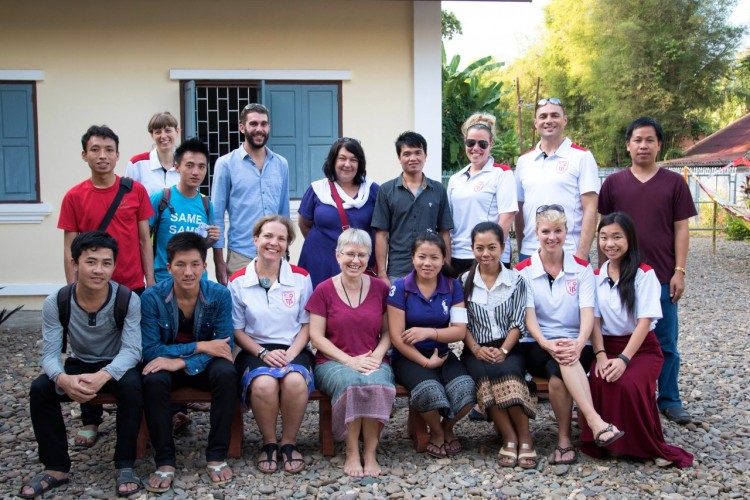By Casey Stribbell
What is the best way to teach a group of students? How can teachers form a teaching style that will enable students to learn and understand the task at hand? At TIS, we believe we have come up with the best possible strategy for keeping students attentive engaged in class by using an inquiry or activity-based structure of learning.
This teaching strategy is being taught in Laos as part of the TIS/Laos teacher exchange program. Sponsored by Globe, a Canadian non-profit organization, and My Library— the program allows TIS educators to demonstrate their teaching methods to Laotian community leaders. Ultimately, the goal is to make the learning and teaching environment in Laos a success for both students and teachers.
Earlier this year, eight TIS teachers had the opportunity to travel to the north central city of Luang Prabang, where they partnered with Laotian educators. Grade 11 English teacher Doina Tonner was one of the teachers who went to Laos, where she enjoyed sharing the inquiry-based teaching style in which students actively participate and contribute to the learning process. “When we teach a group of children, we are giving the students an opportunity to grow. When someone talks at you, you’ll never feel empowered,” she said.
Tonner believes that students will be more engaged in learning when they are allowed the freedom to work on an assignment on their own time and in their own unique way. According to Tonner, the students in Laos were very excited and enthusiastic about learning. She said it was incredible to see them willingly come to school on a Saturday and Sunday just to learn.
After the trip to Luang Prabang, Tonner and her fellow teachers handpicked a special individual from the group of Laotian instructors to receive a scholarship which would provide them with a hands-on learning experience right here in a TIS classroom. They chose Vang Kittikhoun, a community leader and a member of the Ministry of Education in Laos, who is shadowing Tonner in the classroom. Vang says he is “excited to learn and see Macau,” but is still adjusting to the change from Laos. While there are similarities to Laos, there are also many differences. According to Vang, the weather and friendliness of the people are similar, but the school environment and food is different. “Class time here is very strict, in Laos students will often come (to class) late,” Vang said. “There are also many materials used in teaching—boards, games, movies—that promote learning and students are very involved.”
Vang likes the modern feel of Macau and its bustling economy, which sparks an interest for him since he works in his university’s economics office. He also teaches grammar (listening, reading, writing)—an equivalent of ELA—to university students. Vang has only been at TIS a week, but he says he’s already learned and experienced so much in such a short period of time. He’s noticed that teachers are mindful of the students and take good care of them. “Teachers are very involved since class sizes are smaller (about 20 students) than classes in Laos, which range from 40-50 students,” Vang said.
Vang plans to incorporate an inquiry style of teaching for his students once he returns to Laos. Macau and Laos may be different, but thanks to the TIS/Laos exchange program, teachers are working toward the same goal of impacting students in a positive way.
